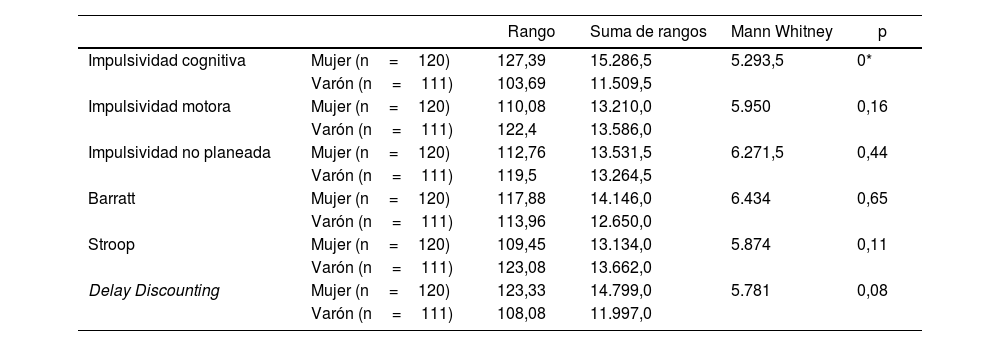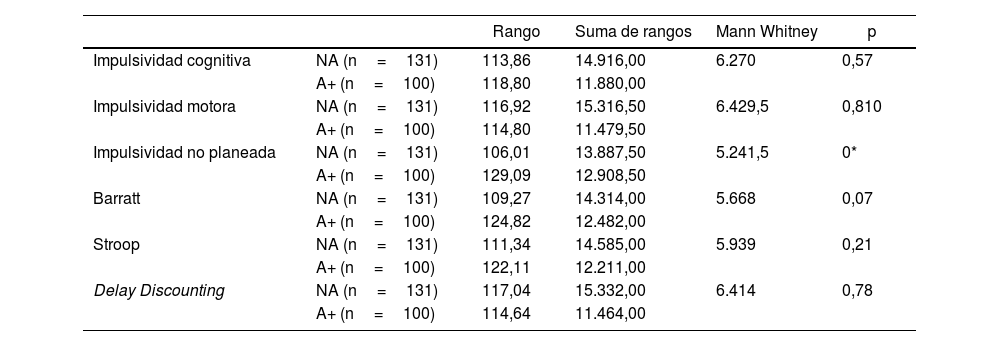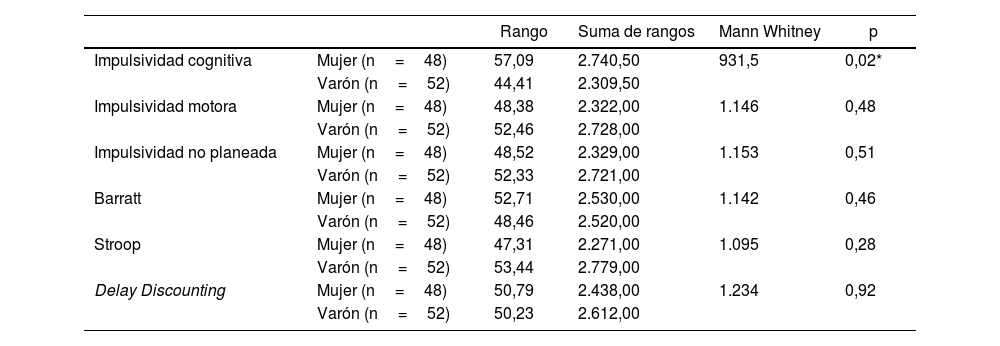Las sustancias mayormente utilizadas por los adolescentes son alcohol, tabaco y cannabis. En Colombia, el uso de estas sustancias comienza a edades cada vez más tempranas; este inicio precoz podría deberse a múltiples factores, entre estos, la impulsividad.
ObjetivoAnalizar la relación entre rasgos y niveles de impulsividad y el consumo de alcohol en adolescentes de 14años escolarizados en el departamento de Córdoba, Colombia.
MétodoUn total de 231 adolescentes escolarizados de 14años de la ciudad de Montería (Colombia) fueron evaluados para uso de alcohol y completaron tres evaluaciones sobre impulsividad: una de autorreporte (BIS-11-A) y dos tareas comportamentales (test de Stroop y Delay Discounting).
ResultadosHay una relación significativa entre diferentes medidas de impulsividad (niveles y rasgos) y consumo de alcohol en adolescentes. En general, los adolescentes que en el último año consumieron alcohol presentaron puntuaciones más elevadas en impulsividad no planeada que aquellos que no lo hicieron. En estas mismas condiciones, se encontró que las mujeres presentaron más impulsividad cognitiva que los varones, y los varones mostraron más impulsividad no planeada que otros de su mismo sexo. No se encontraron diferencias significativas por sexo en la prevalencia de año de uso ni en la edad de inicio de consumo de alcohol (12años).
ConclusionesEl inicio de alcohol es de inicio cada vez más temprano, independientemente del género. Diferentes rasgos de impulsividad se relacionan con el consumo de alcohol en adolescentes. Las mujeres usuarias de alcohol muestran niveles más altos de impulsividad cognitiva, y los varones que usan alcohol, niveles más elevados de impulsividad no planeada.
The substances most used by adolescents are alcohol, tobacco and cannabis. In Colombia, the use of these substances begins at increasingly younger ages. This early onset could be due to multiple factors, including impulsivity.
ObjectiveAnalyze the relationship between traits and levels of impulsivity, and alcohol consumption in 14-year-old adolescents attending school in the department of Córdoba, Colombia.
MethodTwo hundred and fifty-four 14-year-old school-age teenagers from the city of Montería (Colombia) reported drug use and completed three evaluations on impulsivity, one for self-report (BIS-11-A) and two behavioral tasks (Stroop test and delay discounting).
ResultsThere is a significant relationship between different measures of impulsivity (levels and traits) and alcohol consumption in adolescents. In general, adolescents who consumed alcohol in the last year had higher scores on unplanned impulsivity than those who did not. Under these same conditions, it was found that women showed more cognitive impulsivity than men, and men showed more unplanned impulsivity than others of the same sex. No significant differences were found by sex in the prevalence of year of use or in the age of initiation of alcohol consumption (12years).
ConclusionsAlcohol onset is of increasingly earlier onset regardless of gender. Different traits of impulsivity are related to adolescent alcohol consumption. Female alcohol users show higher levels of cognitive impulsivity and male alcohol users higher levels of unplanned impulsivity.
Artículo
Comprando el artículo el PDF del mismo podrá ser descargado
Precio 19,34 €
Comprar ahora











